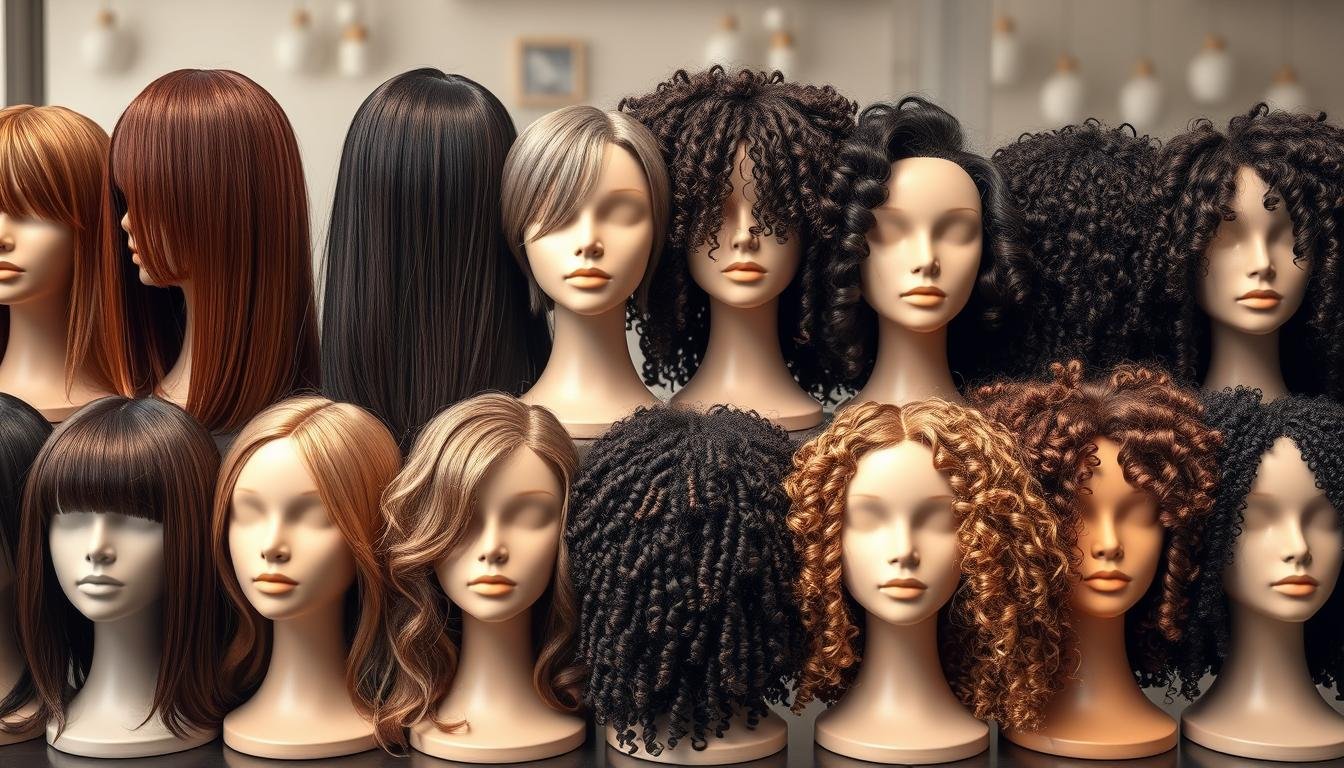How to Identify My Hair Type? A Complete Guide to Hair
Did you know that the average person has 80,000-120,000 strands of hair on their head? With such a vast number of follicles, it’s no wonder that hair can come in a wide variety of textures, densities, and curl patterns. Understanding your unique hair type is the key to unlocking an effective hair care routine that will help you achieve healthy, beautiful locks. This comprehensive Guide will walk you through the process of identifying your hair type and provide valuable insights on how to cater to your specific needs.
Key Takeaways
- Hair type is determined by factors like texture, density, and curl pattern.
- Knowing your hair type is essential for selecting the right hair care Products and styling techniques.
- There are four main hair types: straight, wavy, curly, and coily, each with their own unique characteristics.
- Assessing your hair at home can be done through visual inspection and physical tests.
- Hair porosity, density, and elasticity are also important factors to consider when identifying your hair type.
What is Hair Type and Why It Matters?
Understanding your hair type is the foundation of a personalized Hair Care routine. Hair texture refers to the width of individual strands, categorized as fine, medium, or coarse. Hair formation describes the shape or pattern of hair strands, ranging from straight to coily. Knowing your exact hair type is essential for selecting appropriate Products, styling methods, and maintenance routines.
Understanding Hair Texture
Hair types are divided into four main categories: Type 1 for straight hair, Type 2 for wavy hair, Type 3 for curly hair, and Type 4 for coily hair. Each type is further categorized into subcategories denoted by A, B, or C based on the tightness or looseness of the curls and coils. Many individuals have a combination of different hair types on various parts of their head.
The Importance of Knowing Your Hair Type
Knowing your hair type is crucial for maintaining hair health and achieving desired styles. Around 40% of African American women reported that the desire to maintain their hairstyle prevents them from exercising regularly. More than 60% of African American women wore chemically relaxed styles, which can impact hair health. Type 4 hair, considered the most delicate, requires a lot of moisture to maintain its health. Stylists recommend using deep conditioning masques, butters, and creams to preserve the health of Type 4 hair. Protective styles like weaves and braids can be damaging to Type 4 hair as they can lead to dryness and breakage.
Embracing your hair type and understanding its unique needs is the first step towards a personalized hair care routine that enhances your natural beauty and promotes healthy, vibrant hair.
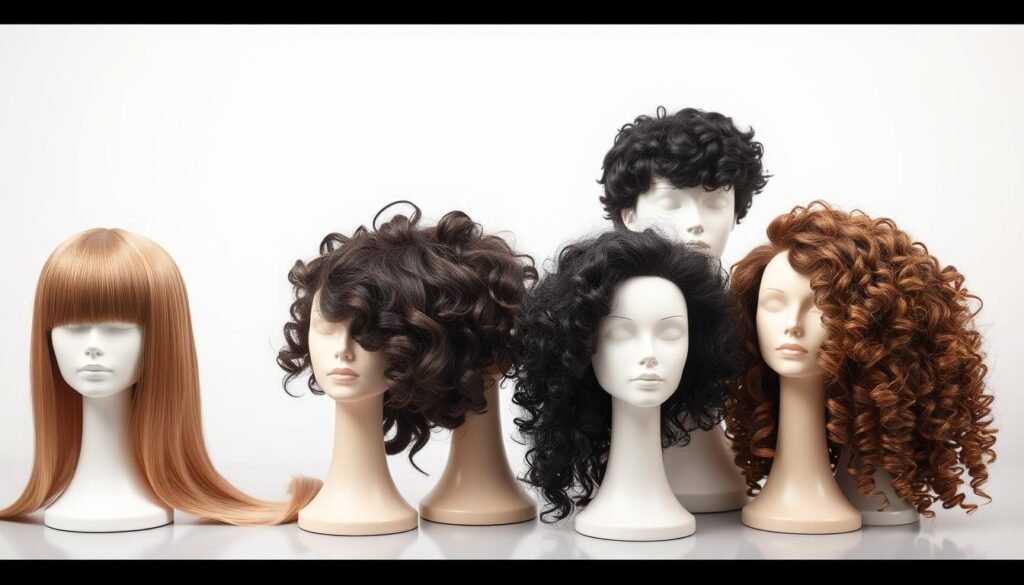
The Different Hair Types Explained
Understanding the various hair type categories is the first step in identifying your unique hair characteristics. There are four primary hair types – straight, wavy, curly, and coily – each with their own distinct features and care requirements.
Straight Hair
Type 1 hair, commonly known as straight hair, lies flat against the scalp with no visible curl pattern. The strands have a smooth, sleek texture and can range from fine to coarse in thickness. Individuals with straight hair often find it easy to style and manage, but it may also lack volume and body.
Wavy Hair
Type 2 hair is classified as wavy, featuring an “S” shaped curl pattern. The waves can be loose and soft or more defined, depending on the hair’s texture and thickness. Wavy hair types typically have medium-density strands that are moderately responsive to humidity and often require additional styling products to maintain their shape.
Curly Hair
Type 3 hair is characterized by tight, well-defined curls that form ringlets. These curls can range from loose and bouncy to compact and coiled. Curly hair tends to be drier and more fragile than straight or wavy hair, often requiring specialized care and techniques to keep it healthy and manageable.
Coily Hair
Type 4 hair, also known as coily or kinky hair, has a tightly coiled, spring-like texture. This hair type is commonly found among individuals of African descent and is often the most challenging to style and maintain. Coily hair requires a gentle, moisturizing approach to keep it hydrated and prevent breakage.
Identifying your specific hair type within these broad categories can help you tailor your hair care routine and choose the right products to keep your locks healthy and vibrant. Remember, hair type is not a fixed characteristic, and factors such as damage, styling, and environmental conditions can influence the appearance and behavior of your hair over time.
| Hair Type | Characteristics | Subcategories |
|---|---|---|
| Straight (Type 1) | Lies flat against the scalp with no visible curl pattern. Ranges from fine to coarse in thickness. | 1A (Very Straight, Fine), 1B (Straight, Medium), 1C (Straight, Coarse) |
| Wavy (Type 2) | Features an “S” shaped curl pattern. Waves can be loose and soft or more defined. | 2A (Fine, Soft Waves), 2B (Medium, Beachy Waves), 2C (Coarse, Defined Waves) |
| Curly (Type 3) | Tight, well-defined curls that form ringlets. Can range from loose and bouncy to compact and coiled. | 3A (Loose, Bouncy Curls), 3B (Medium, Spiral Curls), 3C (Tight, Kinky Curls) |
| Coily (Type 4) | Tightly coiled, spring-like texture. Often the most challenging to style and maintain. | 4A (Soft, Springy Coils), 4B (Tight, Zig-Zag Coils), 4C (Dense, Extremely Tight Coils) |
The hair type categorization system not only assesses the structure of the hair but also takes into account the texture, allowing for a more comprehensive understanding of individual hair characteristics. By knowing your hair type, you can better address your specific needs and adopt the most suitable hair care routines and styling techniques.
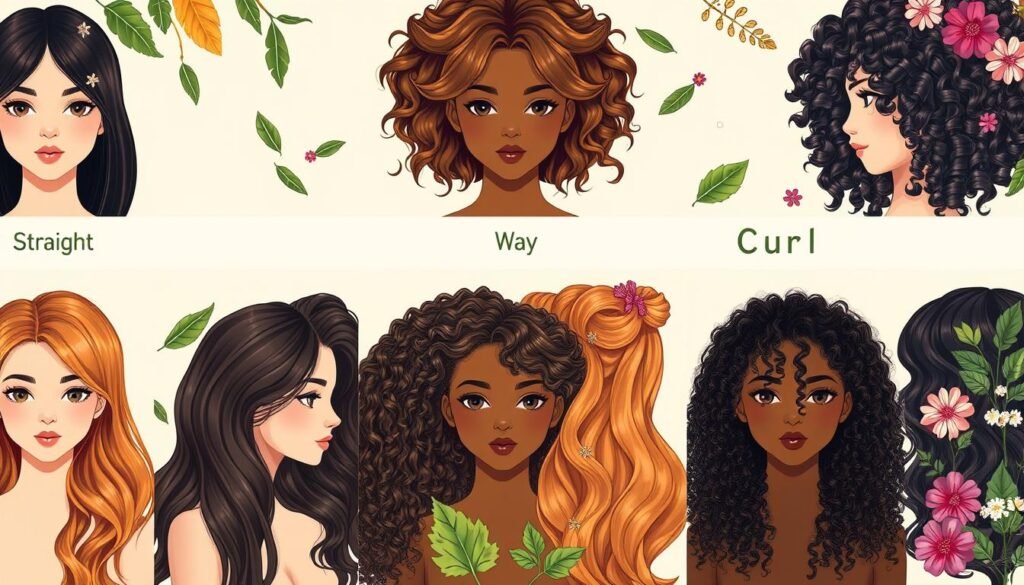
Assessing Your Hair Type at Home
Identifying your hair type doesn’t have to be a guessing game. With a few simple tools and a little observation, you can easily assess your hair type in the comfort of your own home. This step-by-step Guide will help you uncover the unique characteristics of your tresses and set you on the path to customized hair care.
Tools You’ll Need
To assess your hair type, all you’ll need are a few basic items: a mirror, a comb, and potentially a magnifying glass. These simple tools will allow you to closely examine the texture, curl pattern, and behavior of your hair.
Step-by-Step Hair Assessment
- Start with air-dried, product-free hair. This will give you an accurate representation of your hair’s natural state.
- Examine the curl pattern of your strands. Are they straight, wavy, curly, or coily?
- Observe the thickness of individual hair strands. Hold a few hairs against a light background to determine if they are fine, medium, or coarse.
- Take note of how your hair reacts to moisture and humidity. Does it tend to be Frizzy, shiny, or absorb moisture quickly?
- Consider any other unique characteristics, such as the hair’s tendency to tangle or its overall manageability.
By carefully observing these various aspects of your hair, you’ll be well on your way to identifying your hair type and unlocking the secret to optimal hair care. Remember, your hair is unique, and understanding its specific needs is the key to achieving healthy, vibrant locks.
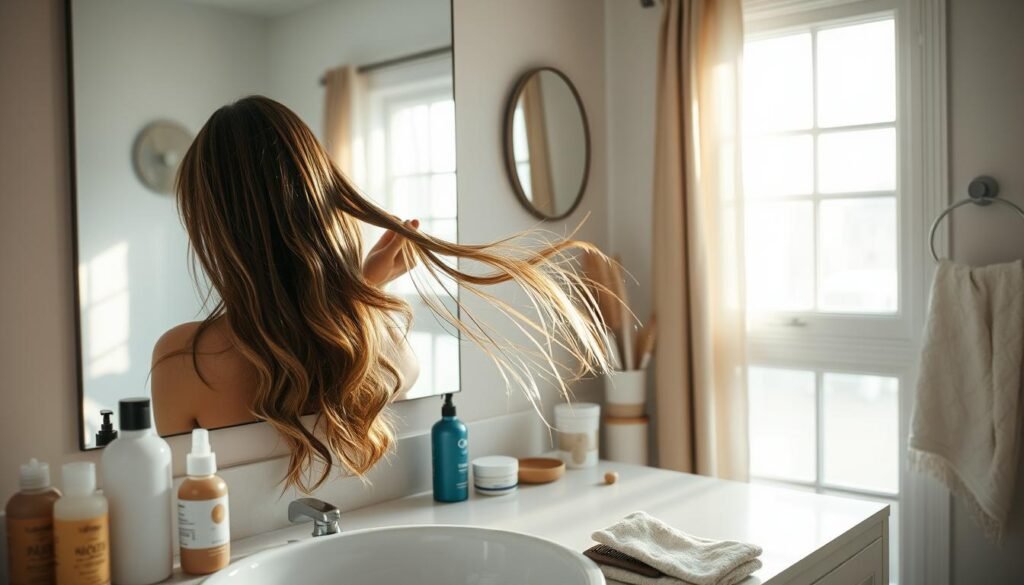
The Role of Hair Density in Identification
Determining your hair type is not just about the texture – the density of your hair also plays a crucial role. Hair density refers to the number of individual hair strands per square inch on your scalp, which can significantly impact the overall thickness or thinness of your hair.
What is Hair Density?
Hair density is categorized into three main types: fine hair, medium hair, and coarse hair. Fine hair has fewer strands per square inch, resulting in a thinner, lighter appearance, while coarse hair has more strands, creating a fuller, thicker look. Understanding your hair density is essential for selecting the right haircare products and styling techniques to achieve your desired hair volume and texture.
How to Measure Your Hair Density
- Part your hair and observe the visibility of your scalp. If your scalp is highly visible, you have low hair density. If your scalp is partially visible, you have medium hair density. If your scalp is barely visible, you have high hair density.
- Perform the ponytail test: Gather your hair into a ponytail and measure the circumference. A ponytail less than 2 inches indicates low density, 2-3 inches is medium density, and over 4 inches is high density.
Knowing your hair density helps you choose the right products and styling techniques to achieve your desired hair volume and manageability. For example, those with low-density hair may benefit from lightweight, volumizing products, while high-density hair may require more moisturizing formulas to prevent heaviness and weigh-down.
| Hair Density | Scalp Visibility | Ponytail Circumference |
|---|---|---|
| Low | Highly visible | Less than 2 inches |
| Medium | Partially visible | 2-3 inches |
| High | Barely visible | Over 4 inches |
Understanding your hair density is just as important as knowing your hair type when it comes to developing an effective hair care routine and achieving your desired look. By assessing your hair density, you can tailor your product selection and styling approach to enhance the health and appearance of your unique locks.
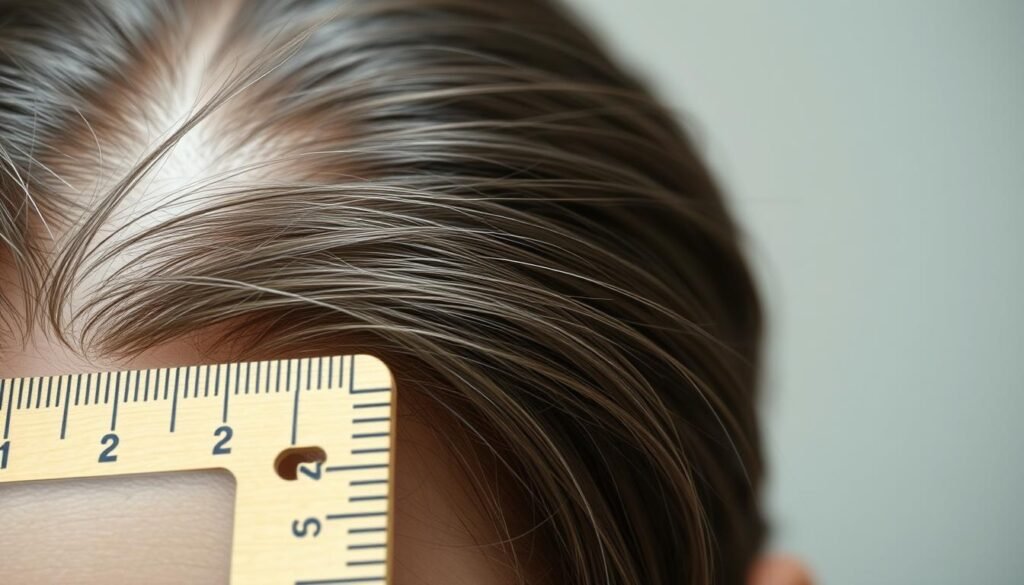
Understanding Hair Porosity
In the world of haircare, understanding your hair’s porosity is a crucial step towards maintaining healthy, vibrant locks. Hair porosity refers to the hair’s ability to absorb and retain moisture, and it plays a significant role in how your hair responds to various products and treatments.
What is Hair Porosity?
Hair porosity is generally categorized into three main levels: low, medium, and high. Low porosity hair has a tightly bound cuticle layer, making it challenging for moisture to penetrate and escape. Medium porosity hair has a moderate flow of moisture in and out, while high porosity hair has gaps and openings in the cuticle layer, allowing moisture to pass through easily.
How to Test for Hair Porosity
Determining your hair’s porosity can be done through simple at-home tests. One of the most common methods is the float test. Simply place a clean, dry strand of hair in a glass of water:
- If the hair floats to the top, you have low porosity hair.
- If the hair sinks slowly, you have medium porosity hair.
- If the hair sinks immediately, you have high porosity hair.
Other tests include the spray bottle test and the strand test, where you observe how quickly the hair absorbs water or oil. Understanding your hair’s porosity level can help you tailor your haircare routine and select the right products to address your specific needs, from moisture retention to cuticle health.
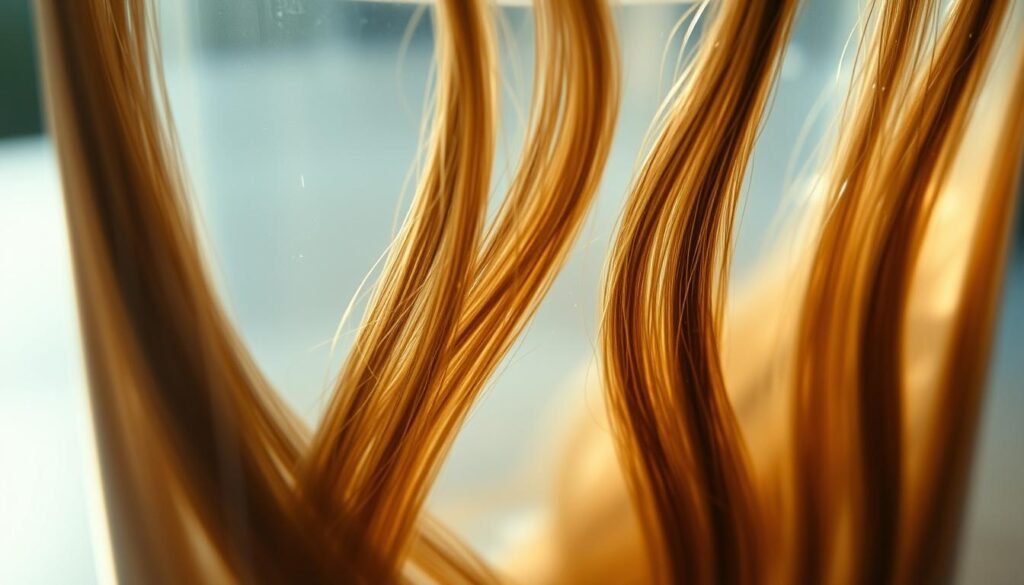
“Knowing your hair’s porosity level is the key to unlocking the path to healthier, more manageable hair.”
Whether your hair is low, medium, or high porosity, with the right knowledge and care, you can achieve the lush, vibrant tresses you desire. By learning to identify and address your hair’s unique porosity, you’ll be well on your way to optimizing moisture retention, cuticle health, and overall hair condition.
Hair Elasticity: A Key Factor
Understanding your hair’s elasticity is crucial for maintaining healthy, strong locks. Hair elasticity refers to your hair’s ability to stretch and return to its original shape without breaking. Good elasticity is an indicator of healthy hair, while poor elasticity may signal damage or the need for more moisture.
Defining Hair Elasticity
Healthy hair should be able to stretch up to 30% of its length and then bounce back to its original form without snapping. This ability to stretch and return is a measure of your hair’s elasticity. Factors like age, damage, and lack of moisture can all impact hair elasticity, so it’s an important factor to consider when assessing your hair’s overall health.
How to Test Your Hair Elasticity
- Take a small, wet strand of hair and gently stretch it between your fingers.
- Observe how far the hair can stretch before breaking.
- Healthy hair should be able to stretch up to 30% of its length and then return to its original form.
- If the hair breaks before reaching this point, it indicates low elasticity and potential damage.
Performing this simple hair elasticity test can provide valuable insights into the overall health and condition of your hair. By understanding your hair’s elasticity, you can make informed decisions about the right hair care products and treatments to keep your locks strong and resilient.
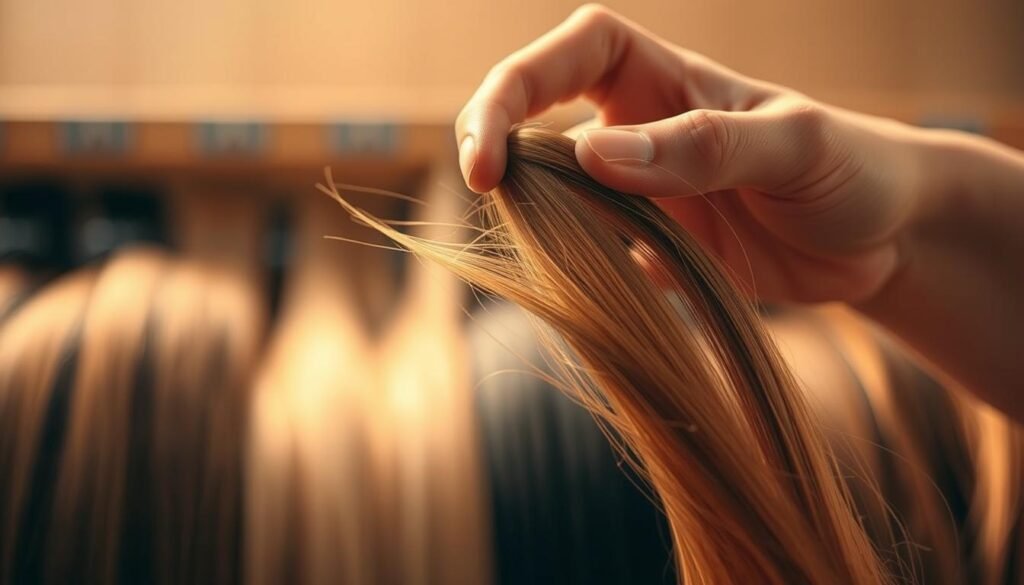
For a more comprehensive analysis, consider seeking the expertise of a professional hair testing facility like HairKnowHow. They can provide an accurate assessment of your hair’s elasticity and offer personalized recommendations to improve its health and appearance.
Remember, maintaining healthy hair elasticity is crucial for preventing excessive breakage and ensuring your hair looks and feels its best. By incorporating regular elasticity testing into your hair care routine, you can take proactive steps to address any underlying issues and keep your hair strong, resilient, and full of life.
Common Misconceptions About Hair Types
When it comes to hair care, there are numerous myths and misconceptions that can lead to ineffective or even harmful practices. One of the most common misconceptions is the belief that all hair types can use the same products. In reality, different hair types require specific care routines and products to achieve optimal results.
Debunking Common Myths
Another prevalent myth is that natural oils are sufficient for all hair types. This is not the case, as different hair types have varying needs when it comes to moisture and hydration. Failing to address these individual needs can result in dry, brittle, or unmanageable hair.
Additionally, many people believe that frequent washing damages hair, which is not entirely true. Regular washing is essential for all hair types to prevent dryness, dullness, and product buildup. The key is to use gentle, sulfate-free shampoos and to avoid over-washing, which can strip the hair of its natural oils.
Why Hair Products Matter
The effectiveness of hair products is heavily dependent on an individual’s hair type, porosity, and specific needs. What works wonders for one person may not be as beneficial for another. Choosing the right products can make a significant difference in the health and appearance of your hair.
By understanding your unique hair type and incorporating the appropriate products and care routines, you can achieve healthier, more manageable hair. Ignoring these factors can lead to disappointment and even damage to your hair.
| Hair Care Myth | Reality |
|---|---|
| All hair types can use the same products | Different hair types require specific care routines and products |
| Natural oils are sufficient for all hair types | Hair types have varying needs for moisture and hydration |
| Frequent washing damages hair | Regular washing is essential to prevent dryness and product buildup |
| Hair products work the same for everyone | Effectiveness depends on hair type, porosity, and individual needs |

By debunking these common misconceptions and understanding the importance of personalized hair care, you can take the first step towards achieving healthier, more vibrant hair. Remember, your hair is unique, and the key to unlocking its full potential lies in recognizing and addressing its specific needs.
The Impact of Hair Health on Type
Your hair’s health has a significant impact on how your natural hair type presents itself. Damage from heat styling, chemical treatments, or environmental factors can alter the texture and behavior of your tresses. Maintaining healthy hair through proper care and protection is key to showcasing your true hair type.
How Damage Affects Hair Type
Heat styling, such as frequent blow drying or use of straightening irons, can cause the hair cuticle to become damaged and disrupted. This can result in a loss of curl pattern or wave, leading to a straighter appearance even for naturally curly or wavy hair types. Chemical treatments like coloring, bleaching, or perms can also alter the hair’s structure, causing changes in texture and curl pattern.
Environmental factors like sun exposure, pollution, and harsh weather conditions can additionally contribute to hair damage, affecting its overall health and type. Proper hair care and protection, such as using heat-styling tools sparingly, applying deep conditioning treatments, and wearing hats or scarves, can help maintain the integrity of your hair and preserve your natural type.
Tips for Maintaining Healthy Hair
- Establish a gentle, hair damage prevention routine with sulfate-free shampoos and moisturizing conditioners.
- Limit heat styling and use protective products like heat-protectant sprays or serums.
- Incorporate regular healthy hair maintenance trims to remove split ends and promote growth.
- Nourish your hair from the inside out with a balanced diet rich in protein, vitamins, and minerals.
- Avoid excessive chemical treatments and opt for more gentle, hair type changes-friendly options when possible.
- Protect your hair from environmental factors by wearing hats, scarves, or using a UV-protecting spray.
By prioritizing hair health through proper care and protection, you can help preserve your natural hair type and enjoy the beauty of your unique tresses.
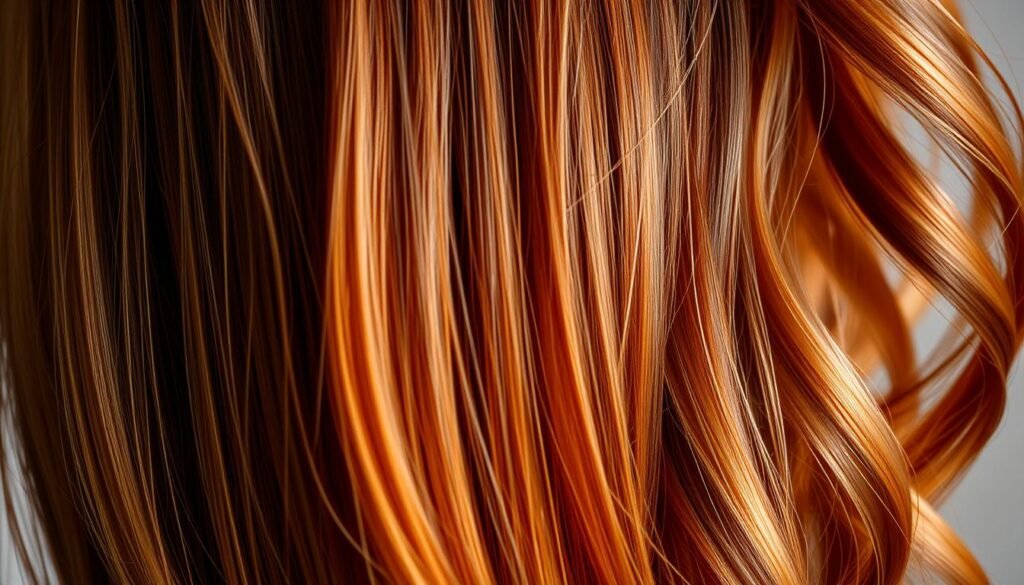
Seeking Professional Help
While determining your hair type can be done at home, consulting a professional stylist can provide invaluable insights and personalized recommendations. If you’re unsure about your hair type, experiencing persistent hair issues, or planning significant changes to your hair care routine, it’s wise to seek the expertise of a professional hair stylist.
When to Consult a Stylist
Consider visiting a professional stylist in the following scenarios:
- You’re unable to accurately determine your hair type using the techniques outlined in this Guide.
- You’re facing persistent hair problems, such as excessive dryness, breakage, or unmanageable texture.
- You’re planning a major hair transformation, such as a dramatic color change or a big chop.
- You want to optimize your hair care routine and ensure you’re using the right professional hair typing products for your specific needs.
What to Expect from a Professional Analysis
During a stylist consultation, the professional will conduct a thorough Expert hair analysis to assess your hair’s texture, density, porosity, and overall health. This comprehensive assessment will help them provide personalized recommendations for products, treatments, and styling techniques that cater to your unique hair type and needs.
| Hair Characteristic | Assessment Criteria |
|---|---|
| Texture | Straight, Wavy, Curly, Coily |
| Density | Fine, Medium, Thick |
| Porosity | Low, Balanced, High |
| Overall Health | Dry, Oily, Balanced |
By seeking the guidance of a professional hair stylist, you can gain a deeper understanding of your hair type and receive customized solutions to achieve healthier, more manageable hair.

Tailoring Products to My Hair Type
Selecting products tailored to your unique hair type is crucial for maintaining healthy, manageable hair. Whether your strands are straight, wavy, curly, or coily, understanding the specific needs of your hair is the key to finding the right hair care solutions.
Choosing the Right Shampoo and Conditioner
For straight hair types, lightweight products that add volume without weighing hair down are ideal. Wavy hair benefits from products that enhance natural waves and control frizz. Curly hair requires moisture-rich formulas that define curls and reduce frizz. Coily hair needs intense hydration and products that enhance curl definition.
When choosing shampoos and conditioners, consider factors like hair porosity and density. Low-porosity hair may benefit from gentle, moisturizing formulas, while high-porosity hair often thrives with strengthening products. Identifying your hair density, whether it’s low, medium, or high, can also guide you towards the right products for your needs.
Recommended Hair Products for Each Type
- Straight Hair: Volumizing shampoos and conditioners, lightweight styling products like mousse or serum
- Wavy Hair: Frizz-fighting shampoos and conditioners, curl-enhancing creams or gels
- Curly Hair: Moisturizing shampoos and deep conditioners, nourishing oils or butter-based stylers
- Coily Hair: Sulfate-free, hydrating shampoos and conditioners, rich, creamy leave-in treatments
Regardless of your hair type, incorporating hair masks and regular trims can also contribute to the overall health and manageability of your locks. By tailoring your hair care routine to your specific needs, you can unlock the full potential of your hair and achieve your desired look with confidence.

Styling Tips Based on Hair Type
When it comes to styling, one size does not fit all. The techniques and products you use should be tailored to your unique hair type for optimal results. Whether you have straight, wavy, curly, or coily hair, understanding the specific needs of your tresses is key to achieving your desired look.
Straight Hair Styling Techniques
For those with straight hair, the goal is often to add volume and shine. Techniques like using a volumizing mousse, blow-drying with a round brush, and incorporating texturizing sprays can help create the illusion of fuller, more voluminous locks. Avoiding over-brushing and using a heat protectant can also help maintain the health and integrity of straight hair.
Curly Hair Styling Techniques
Curly hair thrives on moisture and definition. The “scrunch” method, where you gently scrunch your curls while applying a curl-enhancing product, can help define and enhance your natural waves and coils. Avoiding excessive heat styling and using leave-in conditioners can also help maintain the health and hydration of curly hair.
Protective Styles for Coily Hair
Coily hair types often benefit from protective styles that minimize manipulation and retain moisture. Braids, twists, and buns can help shield delicate strands from daily wear and tear. When wearing these styles, be mindful of tension and use gentle techniques to avoid breakage. Incorporating nourishing oils and butters can also help keep coily hair healthy and hydrated.
Regardless of your hair type, always use heat protectants when styling with hot tools and avoid over-manipulation to prevent damage. Embracing your unique hair texture and experimenting with different styling techniques can help you achieve beautiful, healthy-looking results.
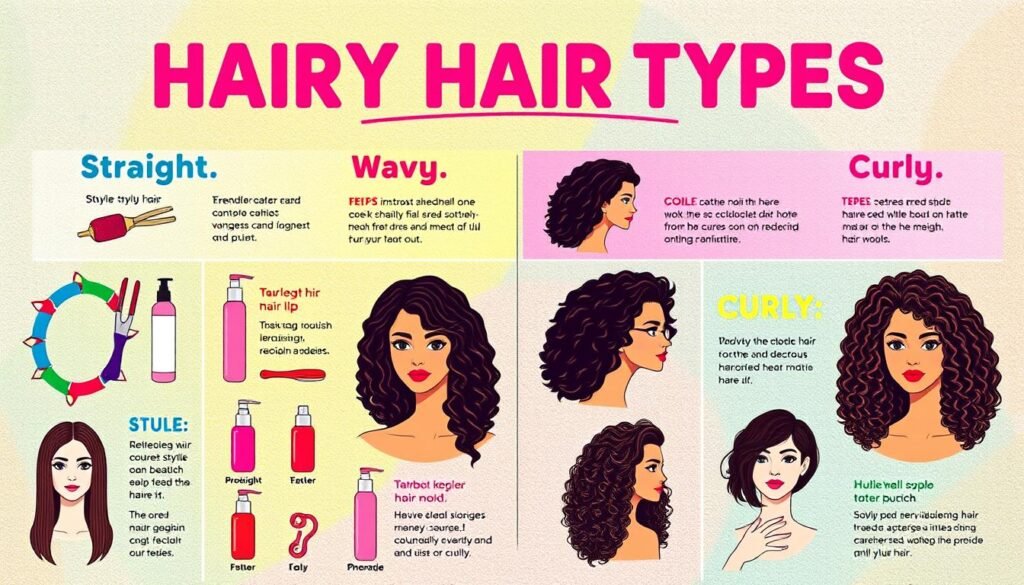
Conclusion: Embrace Your Hair Type
Embracing your natural hair type is the key to achieving healthy, beautiful hair. Understanding and accepting your hair’s unique characteristics allows you to develop a tailored care routine that enhances its natural beauty. Remember that hair types can change over time due to factors like age, hormones, and environmental conditions. Stay open to learning and adapting your hair care journey as needed.
Celebrate Your Unique Hair
Celebrate the diversity of hair types and the journey of discovering what works best for your individual hair needs. Embrace the beauty of your hair, whether it’s straight, wavy, curly, or coily. Each hair type has its own set of characteristics and requires a specific approach to maintain its health and appearance.
Keep Learning and Adapting
As you continue on your hair care journey, be prepared to evolve your routine. What works for your hair today may need adjustments in the future. Keep an open mind, experiment with new products and techniques, and stay informed about the latest advancements in hair care. Celebrating your hair type and adapting your routine will lead to the healthiest, most beautiful version of your hair.
FAQ
What is hair type and why does it matter?
Hair type is determined by factors like texture, formation, density, and length. Knowing your hair type is crucial for implementing an effective hair care regimen, as it helps in choosing the right products and styling techniques for optimal hair health and appearance.
what are the different hair types?
Hair types are classified into four main categories: Type 1 (Straight), Type 2 (Wavy), Type 3 (Curly), and Type 4 (Coily/Kinky). Each type has subcategories (A, B, C) based on strand thickness and curl pattern.
How can I assess my hair type at home?
To assess your hair type at home, you’ll need a mirror, a comb, and potentially a magnifying glass. Examine your hair’s natural state when air-dried without products, observing the curl pattern, strand thickness, and how your hair behaves in different conditions.
What is hair density and how do I measure it?
Hair density refers to the number of hairs per square inch on your scalp. It’s categorized as low, medium, or high density. To measure density, part your hair and observe scalp visibility, or measure your ponytail circumference.
How can I determine my hair porosity?
To test hair porosity, place a strand of clean hair in a glass of water. If it floats, it’s low porosity; if it sinks slowly, it’s medium porosity; if it sinks quickly, it’s high porosity. Porosity affects how well your hair responds to products and treatments.
How do I test my hair’s elasticity?
To test elasticity, wet a strand of hair and gently stretch it. If it returns to its original length without breaking, it has good elasticity. Poor elasticity may indicate damage or the need for more moisture.
What are some common misconceptions about hair types?
Common misconceptions include believing that all hair types can use the same products or that natural oils are sufficient for all hair types. In reality, different hair types require specific care routines and products.
How does hair health impact my hair type?
Damage from heat styling, chemical treatments, or environmental factors can alter your hair’s natural texture and behavior. Maintaining healthy hair through proper care, regular trims, and protective styling helps preserve your natural hair type.
When should I consult a professional stylist?
Consider seeking professional help if you’re unsure about your hair type, experiencing persistent hair issues, or planning significant changes to your hair care routine. A professional analysis can provide personalized recommendations for products, treatments, and styling techniques.
How do I choose the right Products for my hair type?
Selecting products tailored to your hair type is crucial for maintaining healthy, manageable hair. Consider factors like porosity and density when choosing shampoos, conditioners, and styling products.
What are some styling techniques based on hair type?
Styling techniques vary significantly based on hair type. For straight hair, focus on adding volume and shine. Wavy hair benefits from techniques that enhance natural waves without causing frizz. Curly hair requires methods that define curls and maintain moisture, while coily hair often benefits from protective styles.
